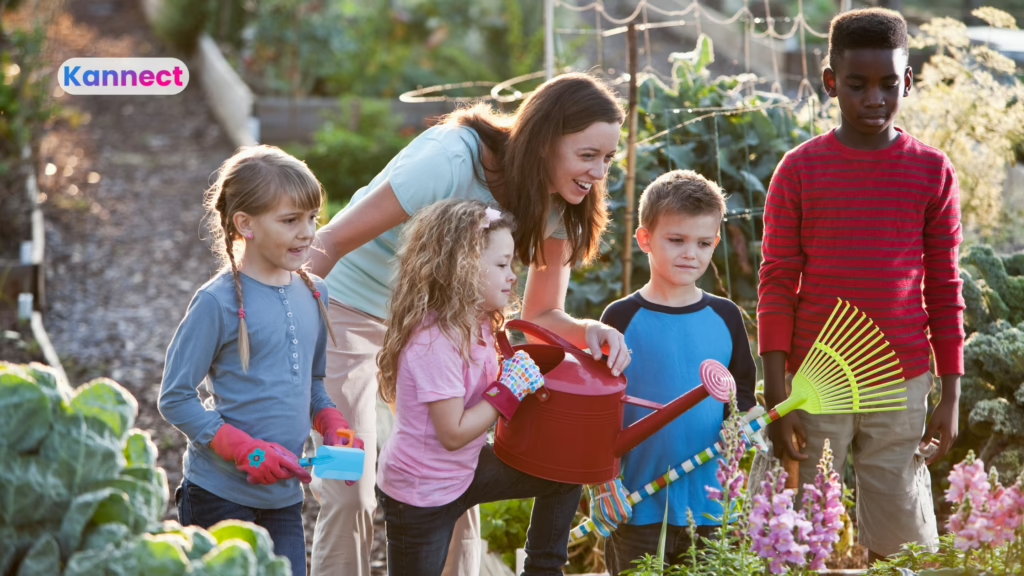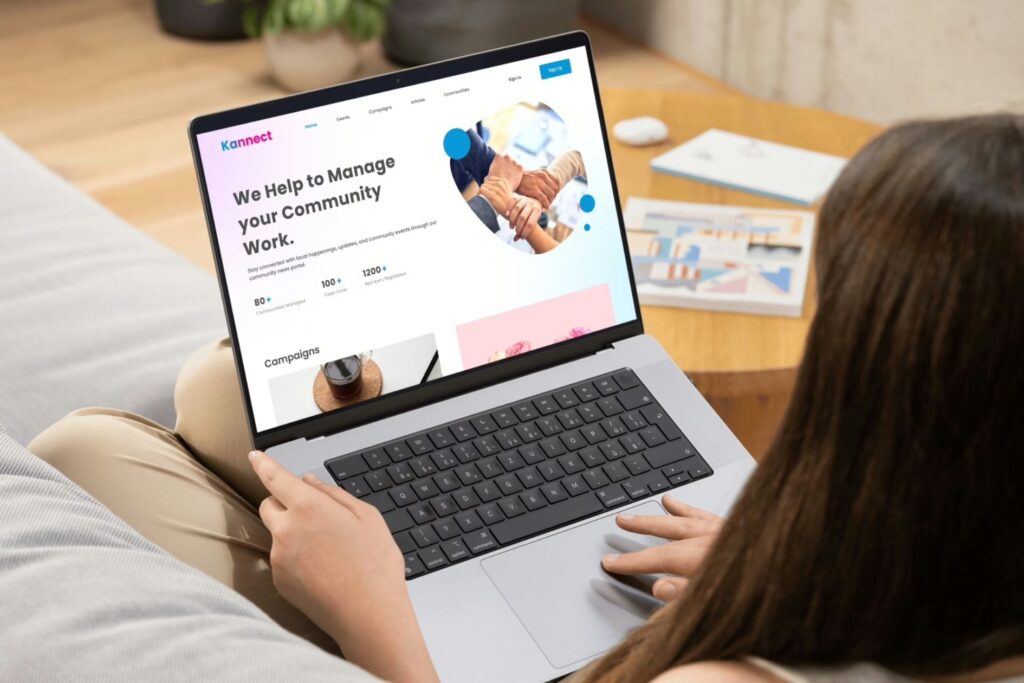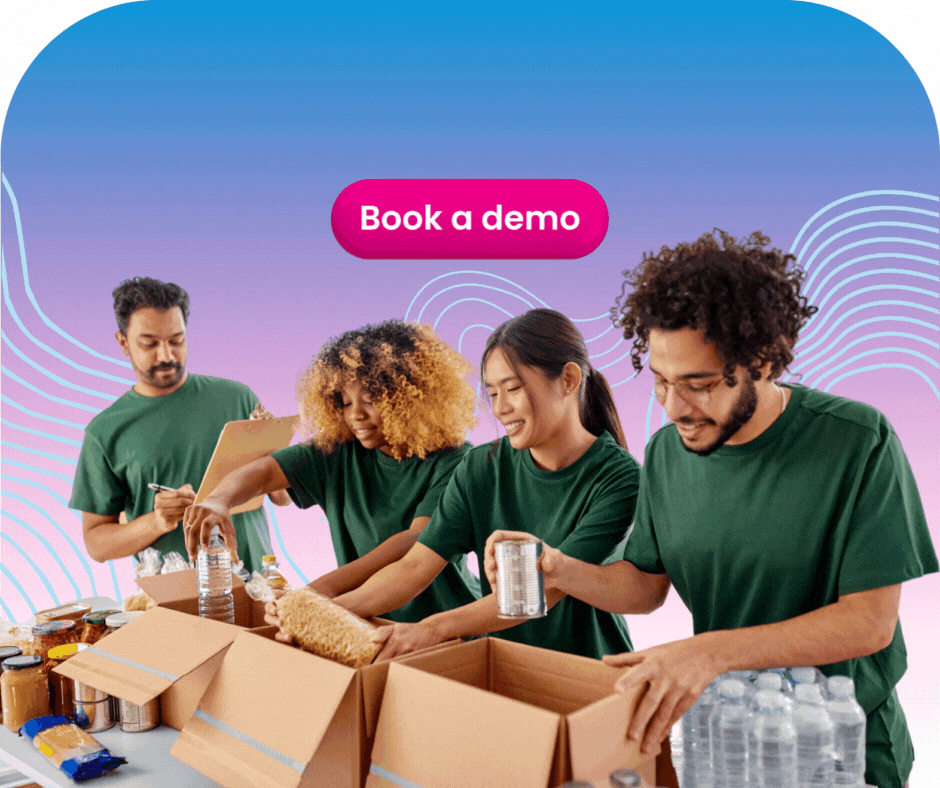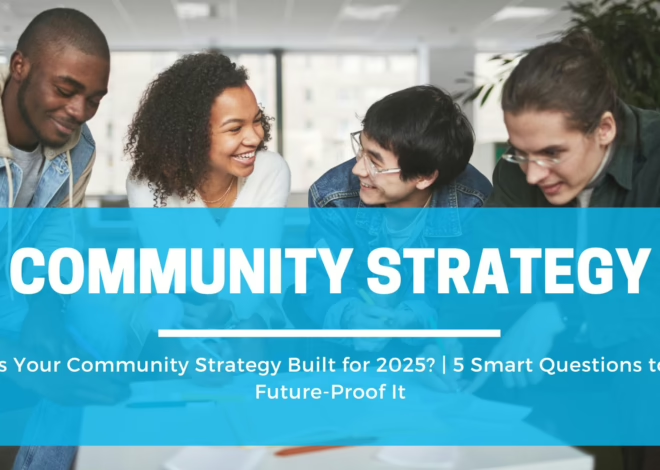
What Does Community Engagement Mean? 5 Powerful Ways It Drives Real Impact
Imagine a neighborhood where people work together to clean the park, support a local food bank, and help kids get to school safely. That’s not just kindness, it’s community engagement in action.
But what does community engagement mean, exactly? And why is it showing up in more conversations, policies, and strategies in 2025?
Let’s break it down in the simplest way possible and then explore how platforms like Kannect are making it easier for schools, nonprofits, and local organizations to turn that engagement into real, lasting impact.
What Does Community Engagement Mean?
What does community engagement mean in today’s world? It’s more than participation, it’s a shared commitment to building something better, together. Community engagement is when people come together to make their neighborhood, town, school, or organization better. It means talking to each other, listening, helping, and solving problems as a group. It’s like teamwork, but for real-life communities.
At its core, what does community engagement mean for everyday people? It means being present, taking initiative, and recognizing that change doesn’t have to come from government or big institutions; it can start on your block, in your school, or at your next meeting.
The official community engagement definition goes something like this: “A process of working collaboratively with and through groups of people to address issues that impact their well-being.”
But here’s a simpler version:
Community engagement means caring enough to get involved and making sure everyone’s voice matters.
Whether it’s organizing a beach clean-up, hosting a town hall meeting, or setting up a safe walking route to school, it’s all about showing up for the people around you.
It’s about turning empathy into action and replacing “someone should fix that” with “we can fix that.”
And that leads us to a bigger question…
Why is Community Engagement Important?
Let’s say a city is planning to build a new park. If they only ask one group of people what they think, the result might not work for everyone. But if they ask parents, kids, older adults, and local business owners; they get more ideas, more feedback, and a park that serves the whole community.
That’s why community engagement is important: it builds trust, creates smarter solutions, and brings people together to make change that sticks.
When people feel heard and valued, they care more and that leads to stronger, more connected communities.
But beyond outcomes, it also answers a deeper question: What does community engagement mean for long-term impact? It means fostering a sense of ownership, pride, and belonging. People are far more likely to protect, nurture, and sustain something they’ve helped build. Engagement doesn’t just result in better projects, it results in stronger people and healthier places.
And in a time when digital noise is loud and real connection feels rare, what does community engagement mean becomes more than a question; it becomes a call to action. It’s about showing up with empathy, acting with purpose, and weaving a web of relationships that holds a community together in both calm and crisis. So how does all this translate into real-world impact? Let’s explore 5 powerful ways community engagement turns connection into meaningful change.
5 Powerful Ways Community Engagement Drives Real Impact
Now that we’ve answered “What does community engagement mean?”, let’s explore how it actually helps and why it’s more than just a buzzword. In practice, what does community engagement mean for real people, on the ground? It means tapping into collective wisdom, creating space for shared ownership, and fueling lasting change. It’s the difference between doing something for a community and doing it with them. Here are five ways that engagement turns intention into impact:
1. It Builds Trust Between People and Institutions
When a school asks parents for ideas before changing policies, or a nonprofit includes volunteers in decision-making, trust grows. People feel respected, not just managed.
What does community engagement mean in this context? It’s not just about asking for input, it’s about honoring that input in meaningful ways. It means people feel heard, and that their opinions don’t disappear into a void.
Example: A university uses open town halls and student surveys to shape campus programs. Students feel empowered, not ignored. They’re not just recipients of change, they’re part of shaping it.
This approach follows key principles of community engagement: transparency, shared power, and mutual respect. When communities feel involved from the beginning, trust becomes the foundation, not an afterthought. And in 2025, trust is currency.
2. It Makes Projects More Effective
When people help shape a project, they’re more likely to support it. They’ll show up, speak up, and keep it going. Ownership leads to momentum.
Example: A small nonprofit launches a food distribution program but first, they ask the community what foods are needed and what times work best. The result? Better turnout, less waste, more impact.
This is the practical side of answering what does community engagement mean; it leads to smarter, more responsive programming. It transforms one-way service delivery into collaborative action. Communities don’t just benefit; they help design the solution, which makes it stronger and more sustainable in the long run.
3. It Sparks New Ideas
When people from different backgrounds work together, innovation happens. Diverse voices surface creative approaches, unexpected solutions, and exciting possibilities.
Example: A center for community engagement in a rural town invites teens, seniors, and business leaders to co-create an arts festival. The result is more colorful, creative, and cross-generational than any one group could’ve planned alone.
Spaces like this show us that what does community engagement mean can vary, but the outcome is often the same: breakthrough ideas and renewed energy. It encourages collaboration that cuts across generations, cultures, and sectors and that’s where the magic happens.
4. It Strengthens Belonging and Identity
People want to feel like they belong and when they contribute to something bigger than themselves, that feeling grows. Community engagement is how individuals become neighbors, and neighbors become a movement.
Example: A neighborhood garden project doesn’t just feed families, it gives people pride and ownership over their space. Kids plant seeds, elders share wisdom, and everyone watches something grow.
This kind of community pride can’t be bought. It’s built. And when people see their fingerprints on the projects around them, they feel seen. They feel home. That’s the emotional answer to what does community engagement mean, it’s about creating a shared sense of “we.”

5. It Prepares Communities for the Future
From climate change to public health, today’s challenges are complex. Community engagement helps local groups respond with speed, care, and shared responsibility. It builds networks of resilience that centralized systems alone can’t replicate.
Example: During a flood emergency, a town uses text alerts, neighborhood captains, and Messaging groups to coordinate evacuation. These community engagement strategies save lives.
So what does community engagement mean in times of crisis? It means preparedness. It means trust already built. It means neighbors turning to each other instead of waiting for help from far away. When communities are connected, they’re stronger not just in good times, but especially when things get tough.
How Do We Define Community Engagement in 2025?
In today’s fast-paced digital world, community engagement looks different than it did even 10 years ago. It’s not just flyers and town hall meetings. It’s Facebook groups, mobile apps, email updates, surveys, in-person events, and instant alerts; all working together to keep people informed and involved. What used to be a one-way announcement is now a two-way conversation; happening in real time, across platforms, and with more voices than ever before.
So, if you were to define community-engagement today, you’d include both face-to-face and digital ways of connecting people around a shared cause. It’s about meeting people where they are – on their phones, in their inboxes, and in their neighborhoods and giving them real ways to participate.
That’s why it’s more important than ever to ask, “What Does Community Engagement Mean” in this context? It means creating a bridge between people and purpose using the tools of today. It means making engagement accessible, immediate, and inclusive. It also means recognizing that community is no longer limited by geography, technology allows engagement to transcend physical boundaries, welcoming a broader and more diverse range of participants into the conversation.
That’s where platforms like Kannect come in.
How Kannect Supports Community Engagement
Once you understand what community engagement means, the next question is: how do we actually make it work, especially when we’re short on time, budget, or staff?
That’s exactly why Kannect was built.
Kannect is an all-in-one platform that helps schools, nonprofits, associations, and community groups manage everything from messages to events to volunteers in one easy place. In other words, it brings clarity, cohesion, and consistency to community engagement efforts that often feel fragmented and exhausting.
Here’s how Kannect empowers community engagement:
▶ Send messages and alerts instantly (text, email, push notification)
▶ Share event invites, RSVPs, and reminders
▶ Create a member directory to connect people
▶ Track participation and feedback
▶ Manage tasks, roles, and groups
Instead of juggling five different tools, Kannect brings it all together so you can spend less time on tech, and more time building real relationships. It simplifies logistics without sacrificing connection.
It fits neatly into modern community engagement frameworks, offering a blend of digital convenience and human-centered design. In a world where connection is often diluted by noise, Kannect helps clarify what does community engagement mean in action: inclusive communication, accessible participation, and consistent follow-through.
When community leaders use Kannect, they’re not just organizing, they’re activating. They’re making space for every voice, simplifying how people get involved, and strengthening the ties that hold their communities together.

How Kannect Could Support Real-World Community Engagement
Community engagement means different things in different places but one thing is universal: when people feel connected and empowered, they show up, participate, and create lasting impact. Platforms like Kannect make this possible by removing barriers and bringing communities together through simple, unified tools.
▶ Imagine a school PTA that uses Kannect to coordinate meetings, share important updates, and track volunteer hours all in one place. No more missed emails or scattered group chats, just one unified space where parents feel informed, empowered, and connected. With better organization, participation could skyrocket, and attendance would improve significantly. So, in this context, what does community engagement mean for schools? It means fostering a culture of participation where every parent feels heard, valued, and has a meaningful role in their child’s education. It’s about building trust and creating a responsive, involved school community.
▶ Picture a local arts council running a community mural competition. Using Kannect, they could collect entries, share updates, and let the public vote all from one easy-to-use dashboard. Artists feel seen and appreciated, the public feels involved and excited, and the whole process becomes more transparent and fun. Here, the meaning of community engagement becomes crystal clear: it’s about transforming passive spectators into active cultural collaborators, people who take pride in creating and celebrating together.
▶ Consider a food justice nonprofit managing meal distributions and volunteer shifts. With Kannect, they could send real-time alerts, share route updates, and gather feedback after each delivery all through one app. Volunteers can easily check schedules and receive last-minute updates, donors can track how their support makes a difference, and local families get timely, reliable aid. In this example, community engagement is all about quick coordination, clear communication, and shared responsibility, especially when it matters most.
When you remove the barriers; disconnected systems, confusing workflows, or scattered information, people show up. That’s exactly what Kannect is designed to do. By streamlining communication and engagement, Kannect helps move community engagement from an abstract idea into something real, visible, and sustained, where every voice is heard and every action counts.
😊 Share Your Community Story With Us!
We believe community engagement isn’t just a theory, it’s something people live and breathe every day. Whether you’re a school encouraging students to get involved, a nonprofit organizing volunteers, or a neighborhood group planning events, we’d love to hear your story!
How are you engaging your community?
Reach out to us to be featured, or to learn more about how Kannect can support your mission. Because when we share what’s working, we all grow stronger and we create new answers to the question: what does community engagement mean in today’s world?
Best Practices for Community Engagement in 2025
Want to get started? Here are a few simple tips; yes, even if your community is small or just beginning.
Start with listening: Ask what matters to your members before launching programs. What does your community care about? What are their hopes, frustrations, or ideas? Great engagement begins with genuine curiosity and respect.
Keep it consistent: Whether it’s weekly emails or monthly town halls, regular touchpoints build trust. People feel more connected when they know they’ll be kept in the loop; not just when there’s an announcement, but when there’s a conversation.
Use the right tools: Platforms like Kannect make communication seamless. With mobile alerts, RSVP features, discussion threads, and event coordination in one place, you reduce drop-offs and confusion. In practice, what does community engagement mean in 2025? It means showing up in people’s lives in ways that are timely, accessible, and respectful of their time.
Be inclusive: Involve people of different ages, backgrounds, and perspectives. True engagement is not just about louder voices, it’s about more voices. When everyone feels like they have a place at the table, communities grow stronger and more resilient.
Celebrate wins: Share stories, photos, and milestones to keep momentum going. Recognition fuels morale. Even small victories like a volunteer appreciation post or a successful clean-up drive, reinforce purpose and encourage future participation.

Remember: What does community engagement mean at its core? It means showing people they matter and giving them the space and support to make a difference.
Wrap Up: So, What is Community Engagement To You?
Community engagement is so much more than a buzzword or a line in a strategic plan. It’s the daily, often small actions that connect people, build trust, and fuel a shared sense of purpose. It’s the conversations, the collaborations, and the caring that transform neighborhoods, schools, and organizations into vibrant, thriving communities.
What does community engagement mean to you? It means showing up; not just physically, but with empathy and an open heart. It means listening deeply and valuing every voice, especially those often overlooked. It means working together to tackle challenges and celebrate wins, big or small.
And when someone asks, “Why is community-engagement important?” you’ll have the answer ready. It’s because real, lasting change doesn’t happen to communities, it happens with communities. When people come together with shared intention and respect, that’s when impact becomes real, visible, and sustainable.
So keep asking, keep connecting, and keep building. Because that’s what community engagement is really all about: turning intention into action, and ideas into real-world impact.
Ready to Turn Your Community Engagement Initiatives into Action?
Discover how Kannect’s all-in-one platform can help your group connect, collaborate, and create real impact; whether you’re a small club or a large organization.
👉 Start your free Kannect account today! No credit card needed, no hassle.
[Get Started with → Kannect]
Stay inspired and informed:
✔️ Follow us on LinkedIn for practical tips on building stronger communities.
✔️ Subscribe to our weekly newsletter, The Community Engagement Playbook, for expert insights delivered straight to your inbox.
✔️ Subscribe to our Blog for more such community-oriented reads!
Try Kannect today

FAQ: Community Engagement + Kannect
1. What does community engagement mean in simple terms?
Community engagement means people coming together to improve their neighborhood, school, or group by listening, helping, and working as a team. It’s about building connections and trust so everyone feels involved and valued. Whether it’s sharing ideas, volunteering time, or supporting each other, it’s the heartbeat of a strong, healthy community.
2. What are examples of community engagement?
Examples of community engagement range widely from volunteer projects that clean parks, to local town halls where people discuss issues, to school fundraisers that bring families together. In today’s digital age, using apps like Kannect helps keep everyone connected, informed, and active. These community engagement initiatives help communities solve problems, celebrate successes, and build lasting bonds.
3. What is Kannect and how does it support engagement?
Kannect is a comprehensive digital platform designed to simplify how groups communicate and organize. It helps communities share updates instantly, manage events seamlessly, connect members easily, and track participation efficiently, all from one centralized place. By integrating multiple communication channels, Kannect empowers organizations to foster deeper connections and stronger involvement. It’s one of the leading community engagement platforms helping transform good intentions into real impact.
4. Who can use Kannect?
Kannect is versatile and user-friendly, making it ideal for nonprofits, schools, universities, associations, religious groups, and any organization aiming to build and nurture a vibrant community. Whether you’re a small local club or a large institution, Kannect’s tools scale to fit your needs, helping you engage your audience effectively and with less effort.
5. How is digital engagement different from in-person?
Digital engagement leverages technology to reach more people quickly, breaking down barriers of time and distance. It allows communities to stay connected even when meeting face-to-face isn’t possible. However, successful digital engagement still depends on building trust, promoting inclusion, and communicating clearly, just like traditional in-person approaches. The best strategies blend both digital and physical touchpoints to create a seamless, meaningful experience.
6. Is community engagement only for big organizations?
Absolutely not! Community engagement is for everyone. From a small neighborhood club to a large university campus, anyone can benefit from thoughtful engagement. With the right mindset and tools like Kannect, organizations of any size can create welcoming environments, foster participation, and make their communities stronger and more connected.



